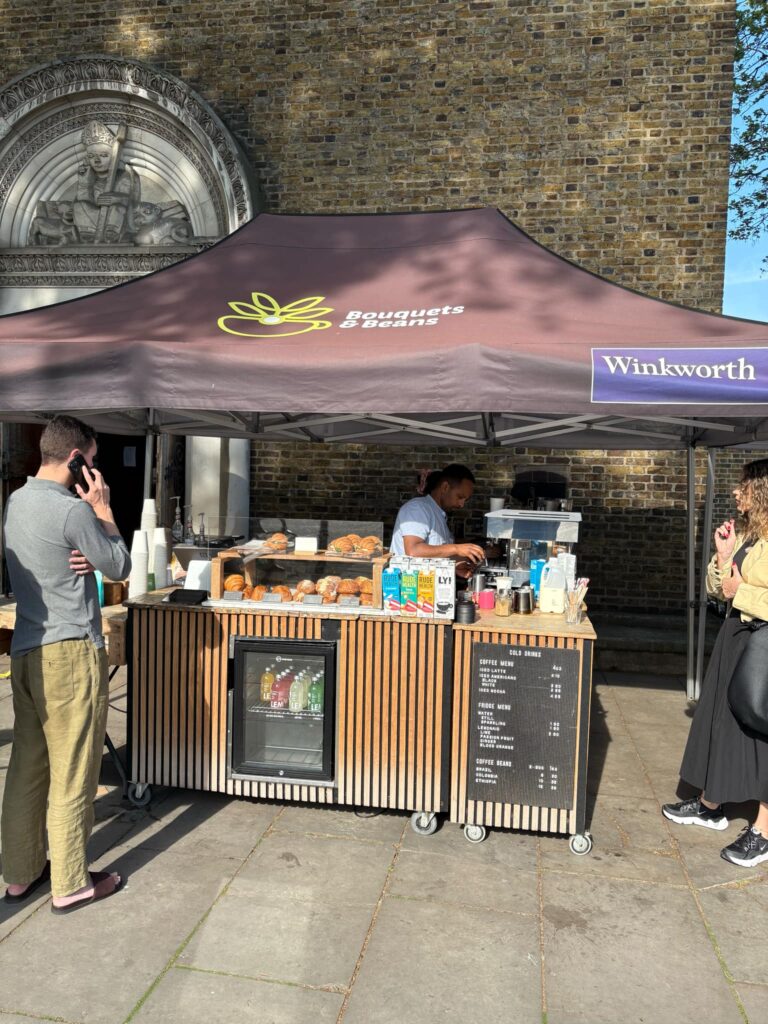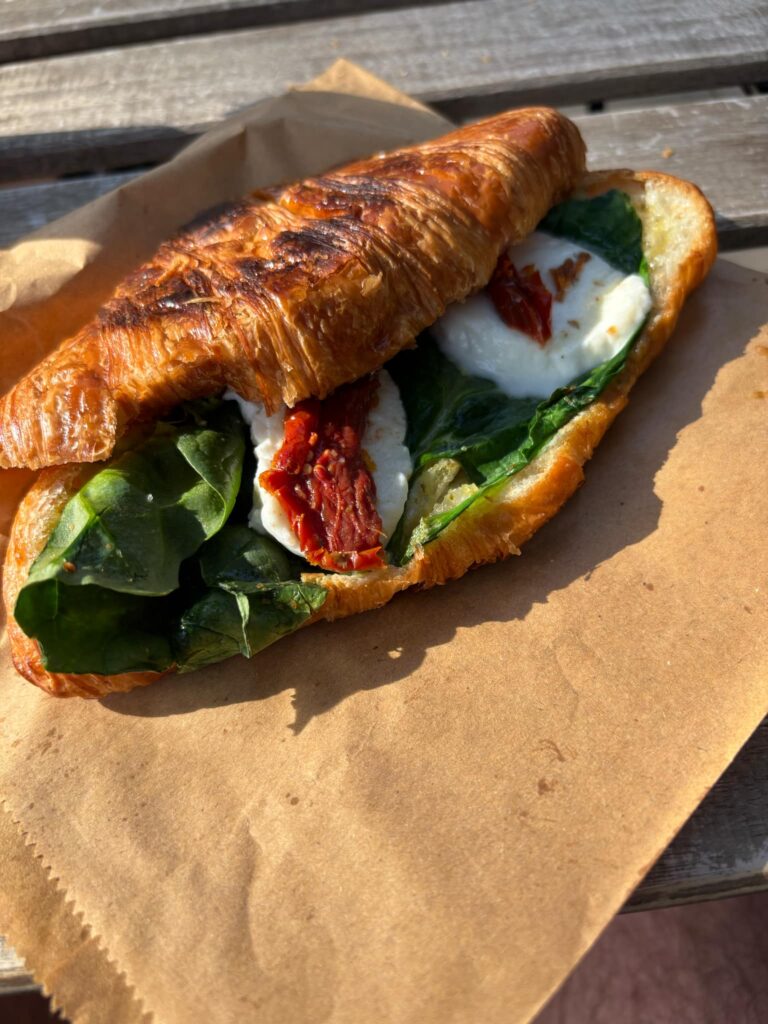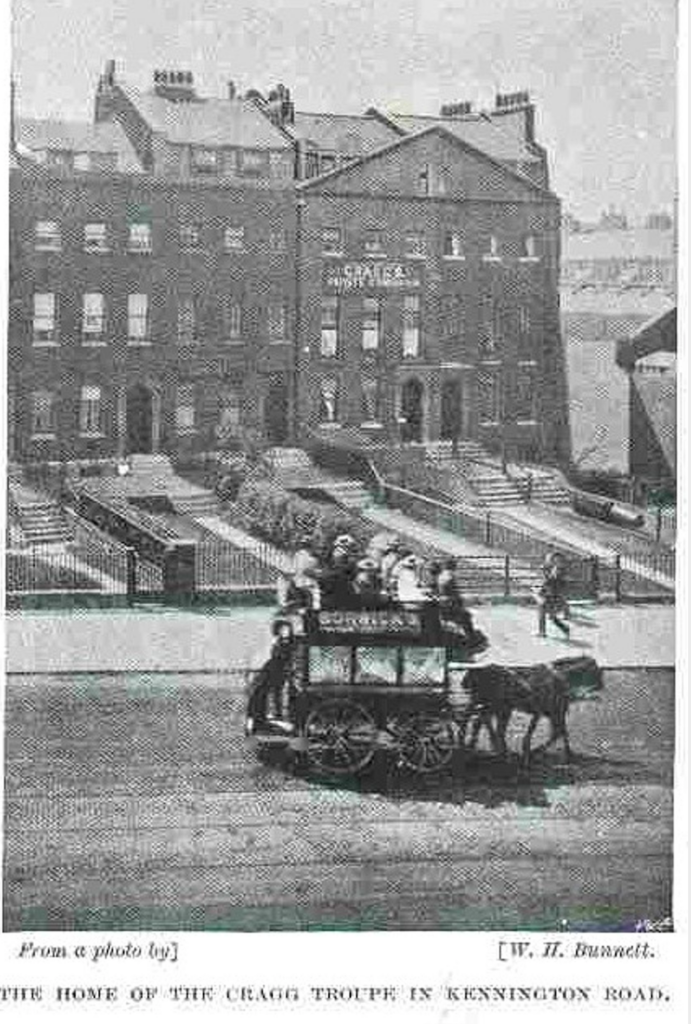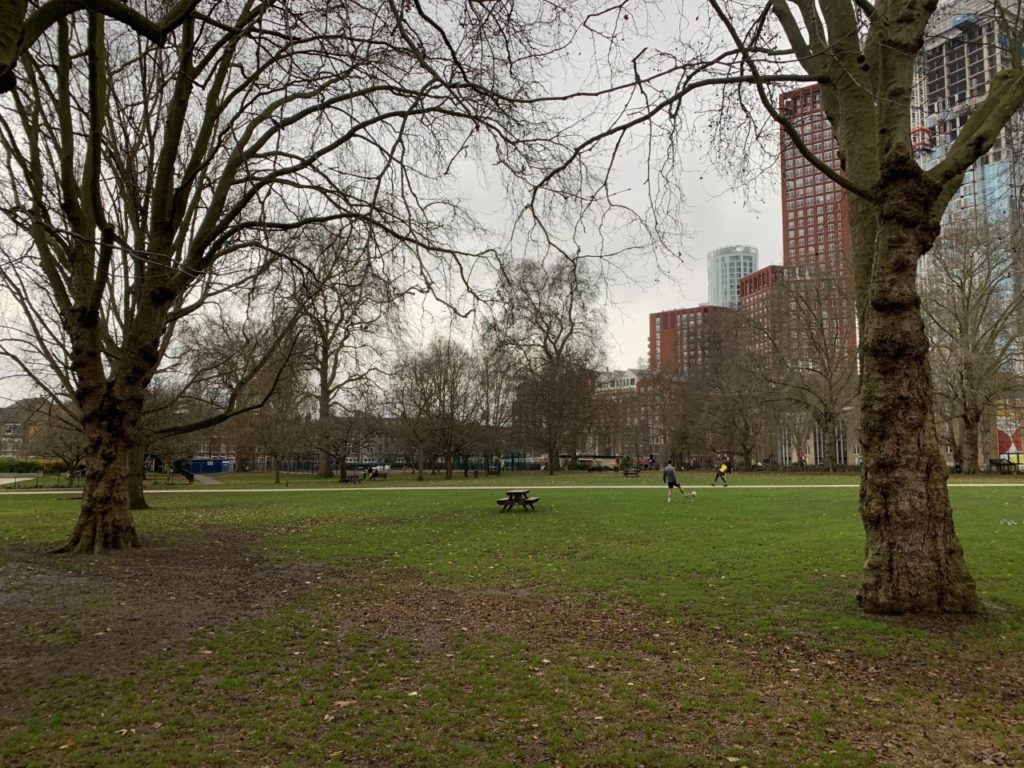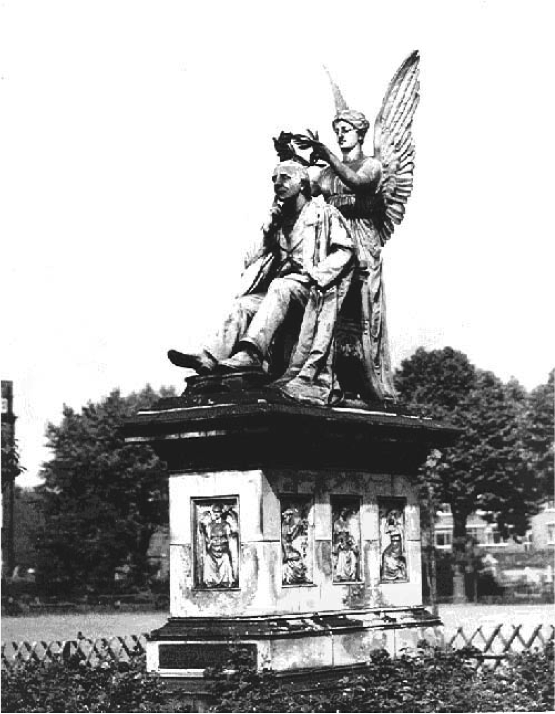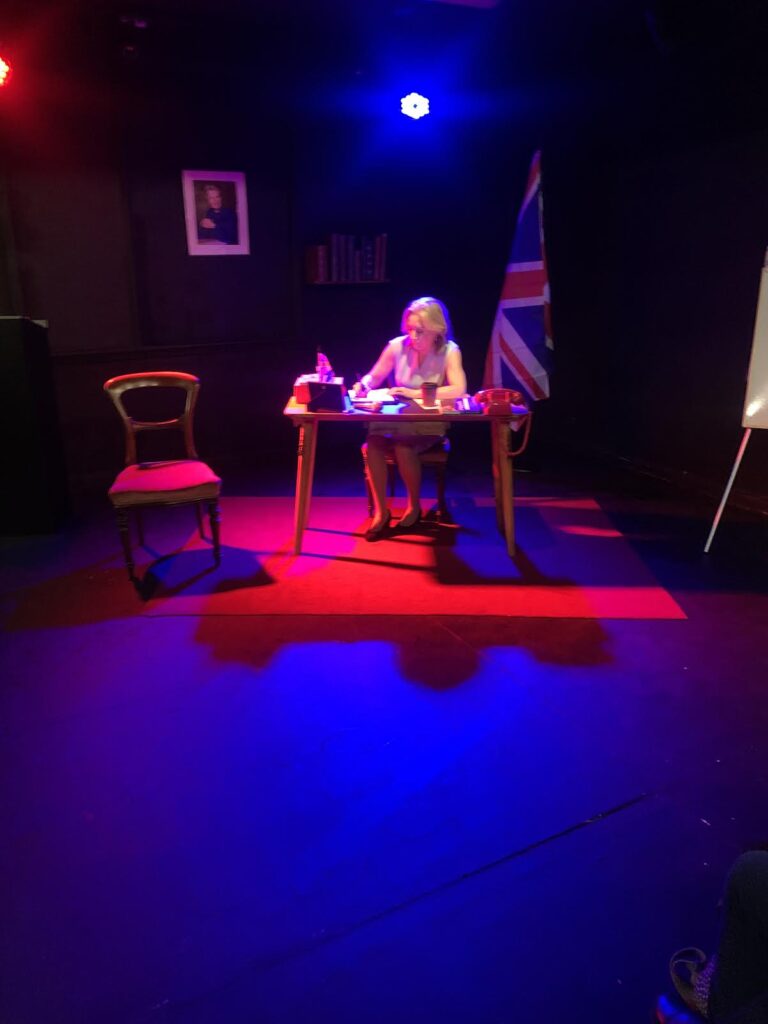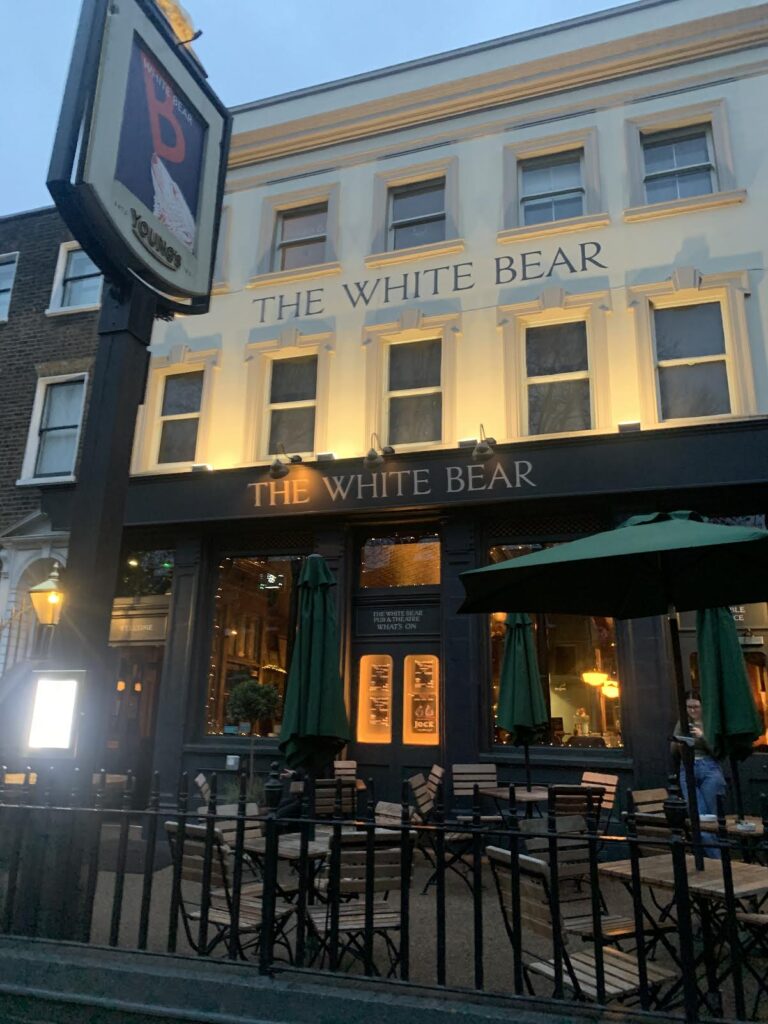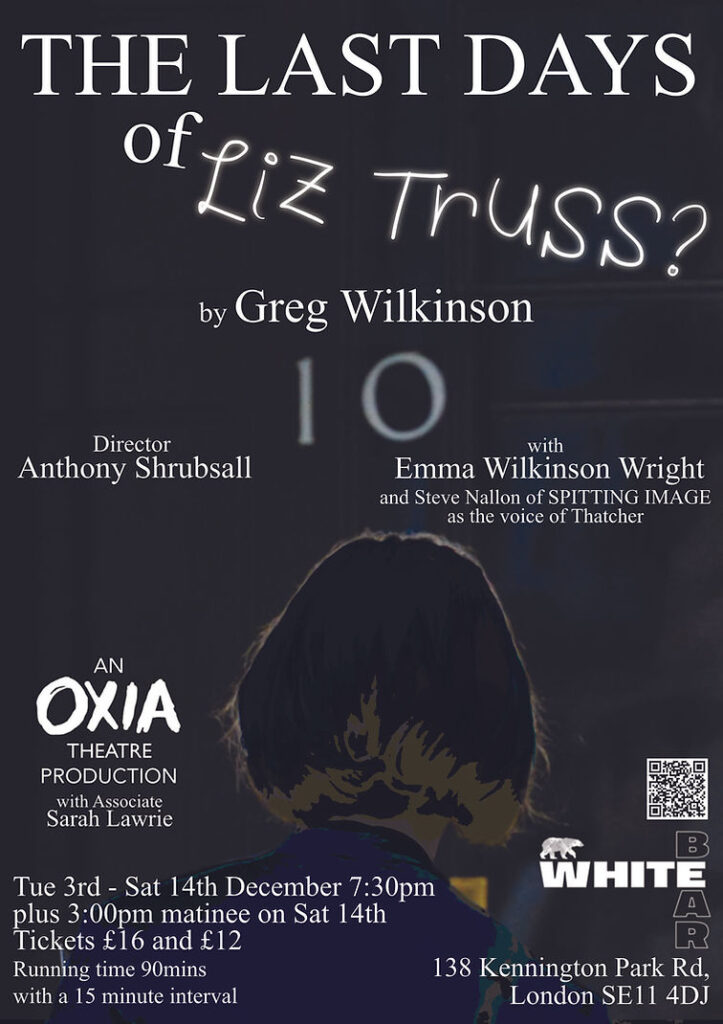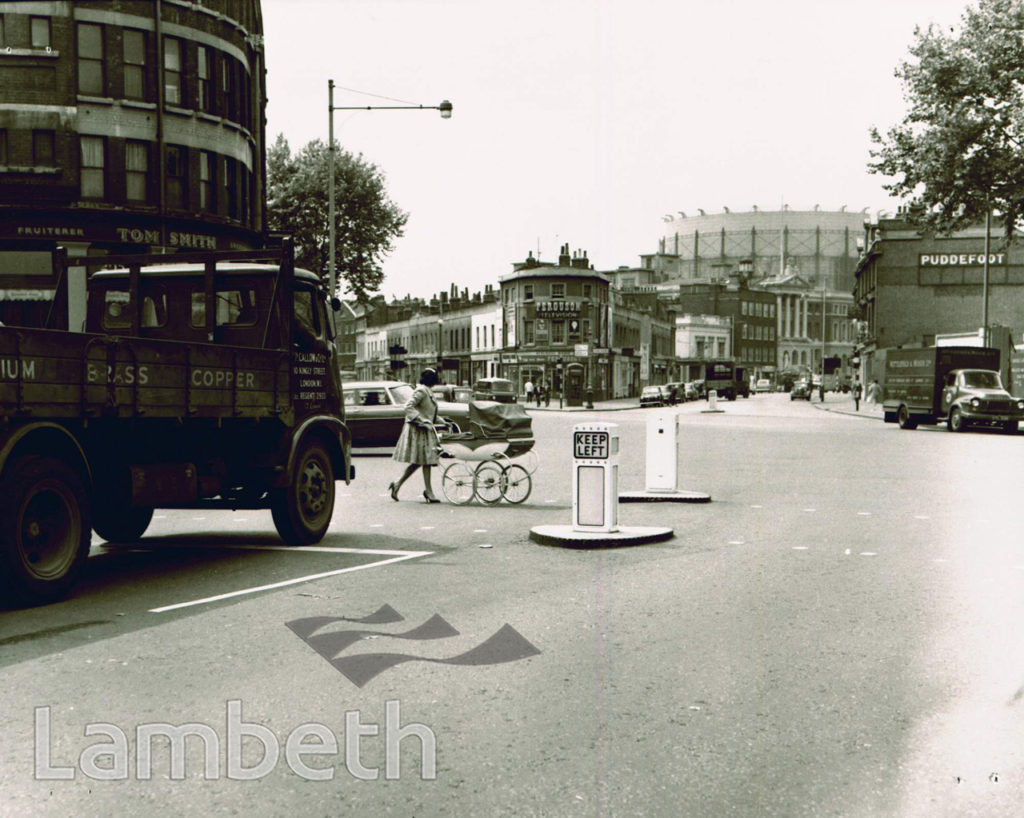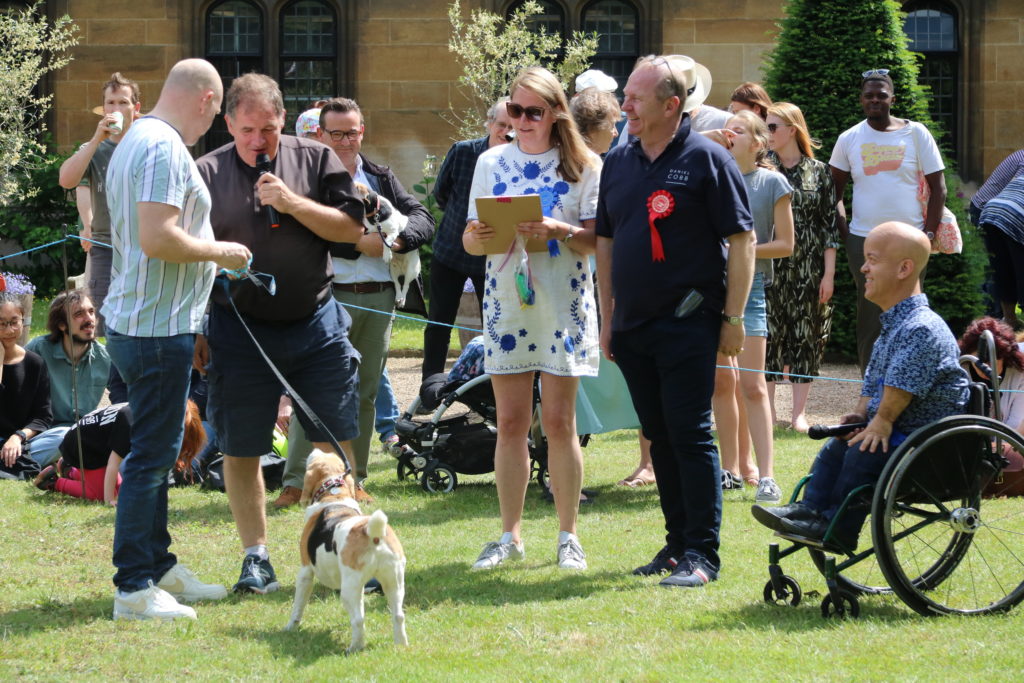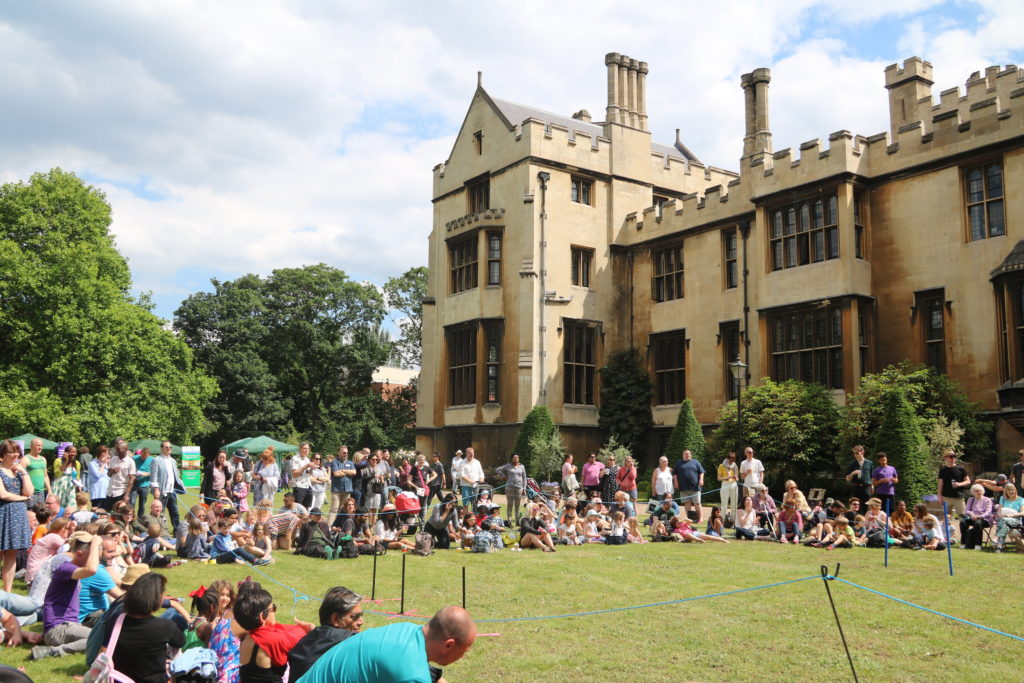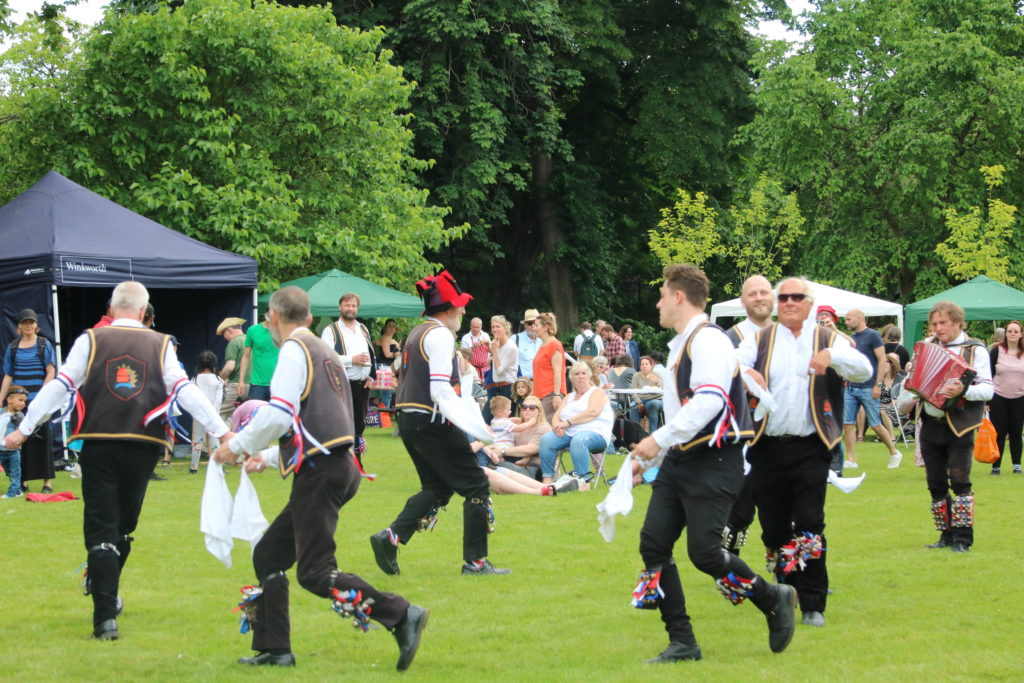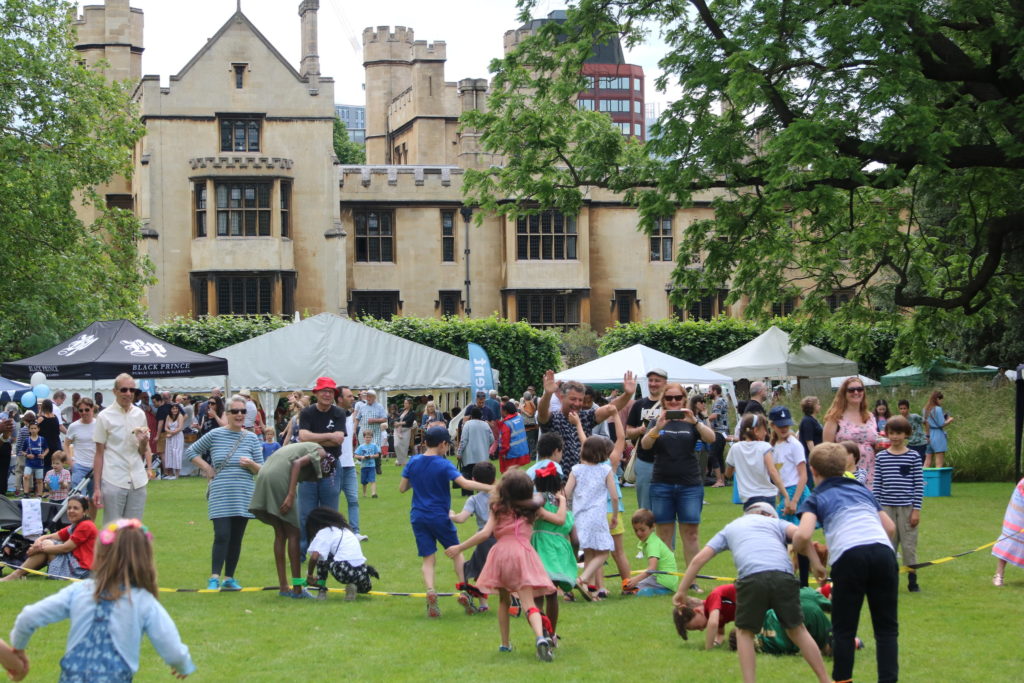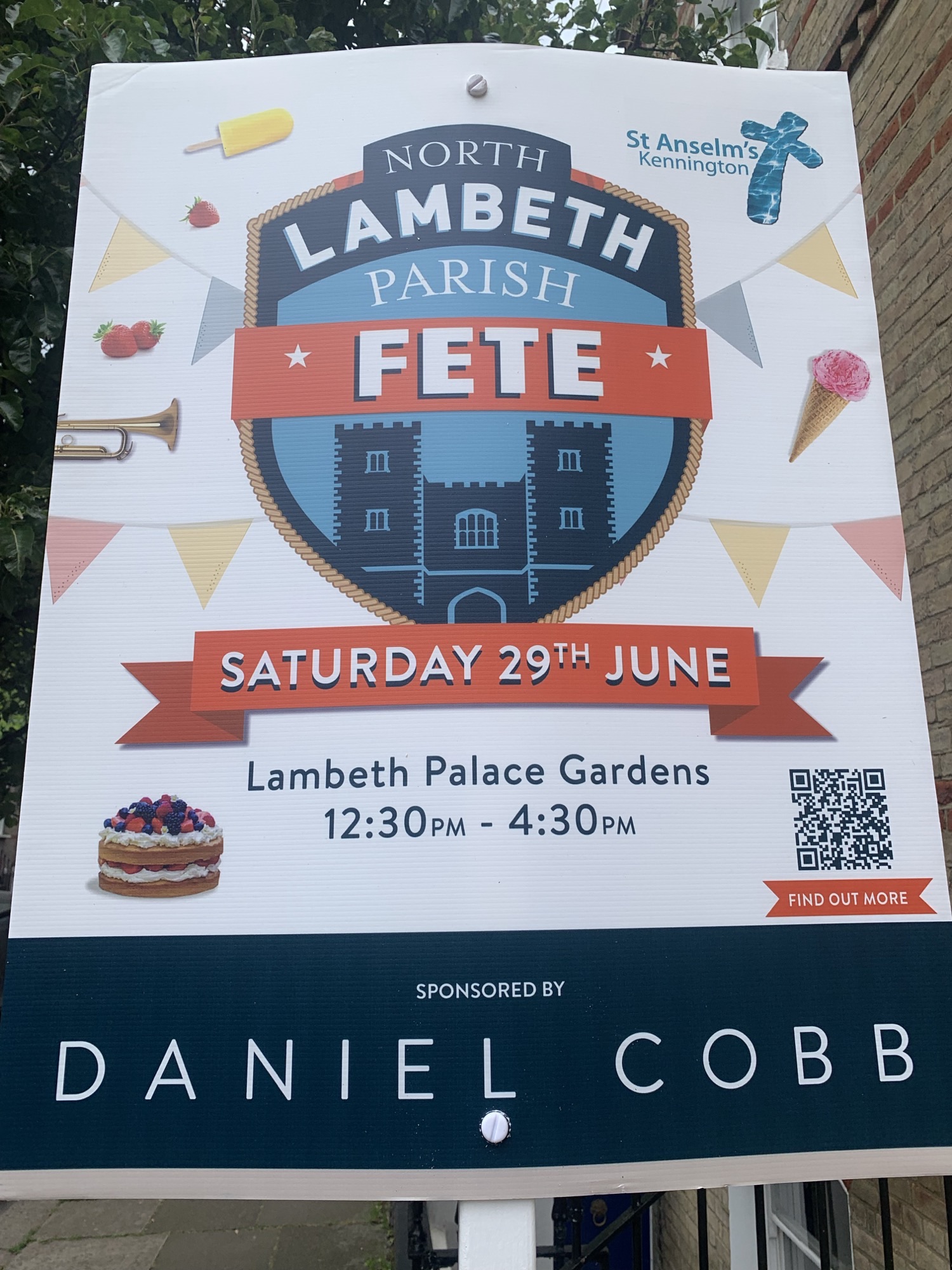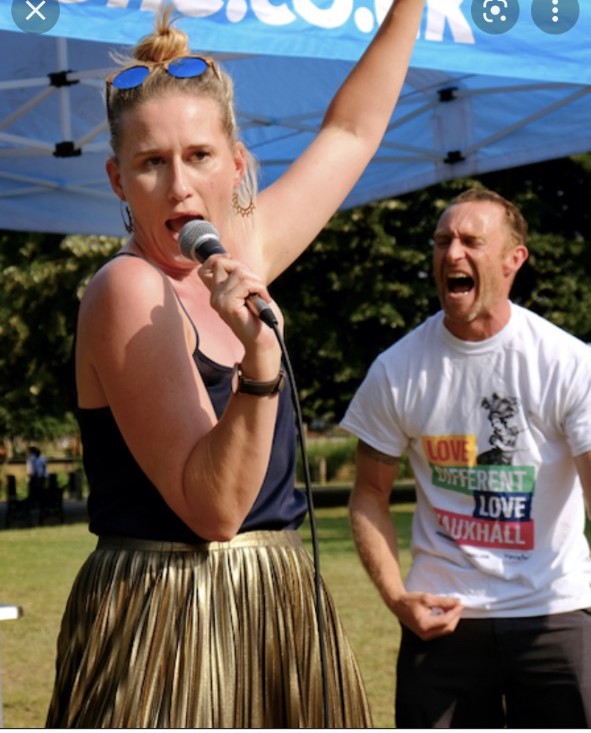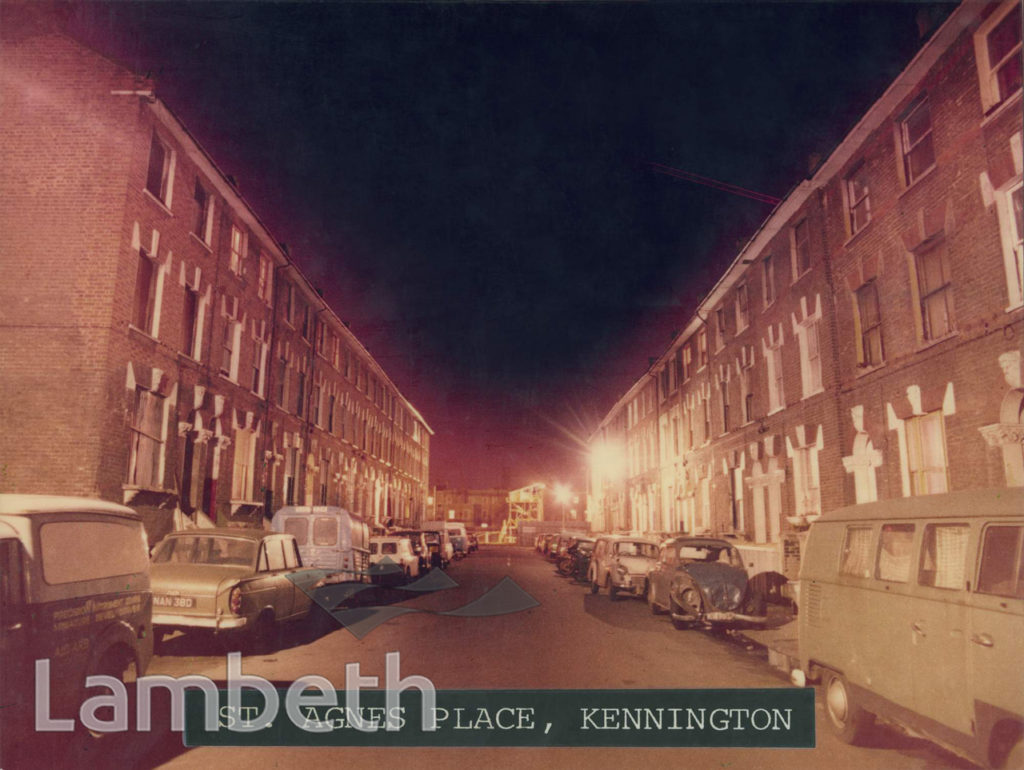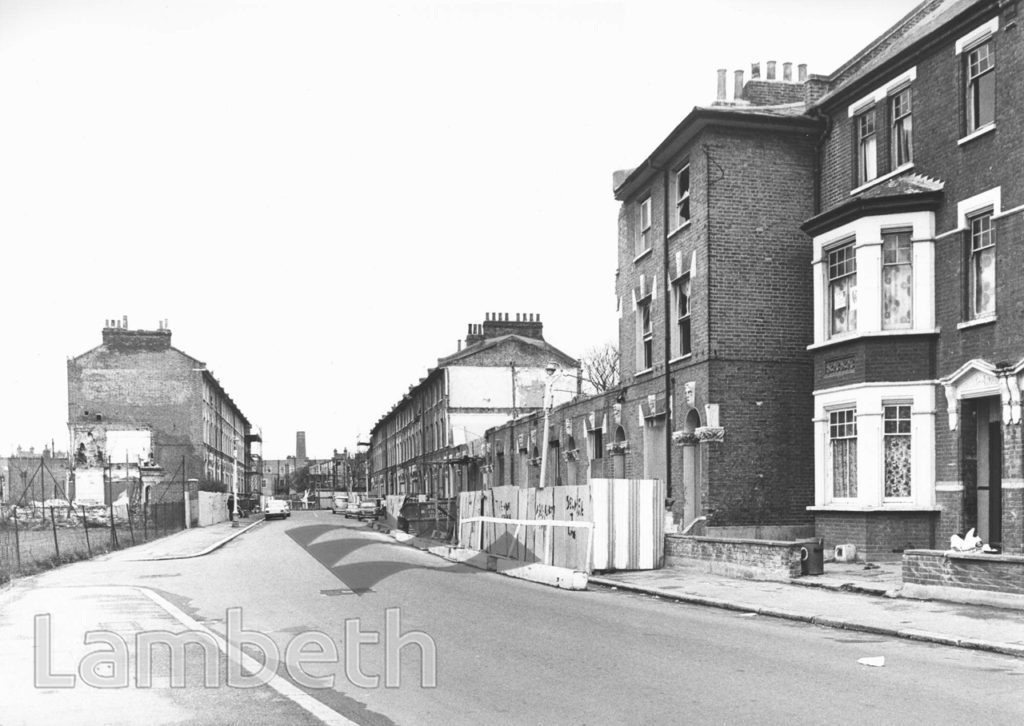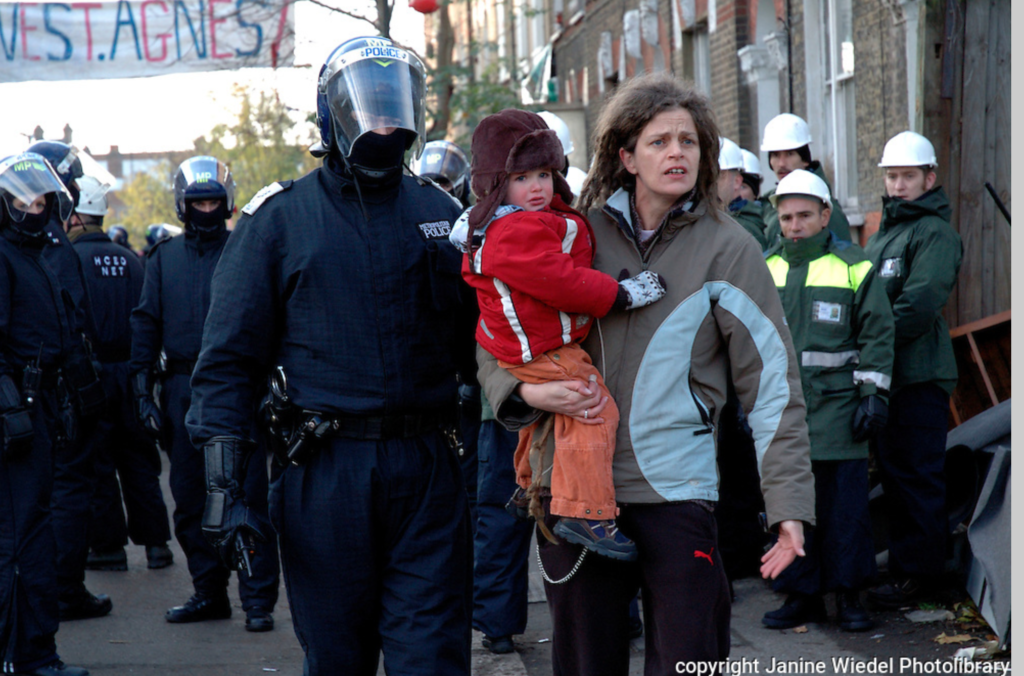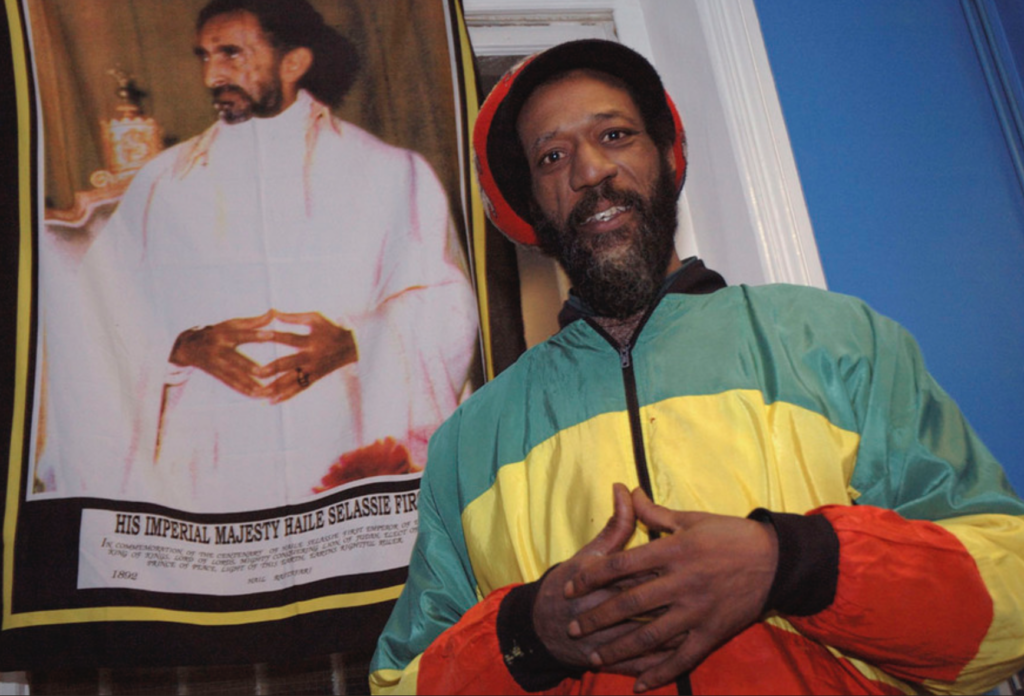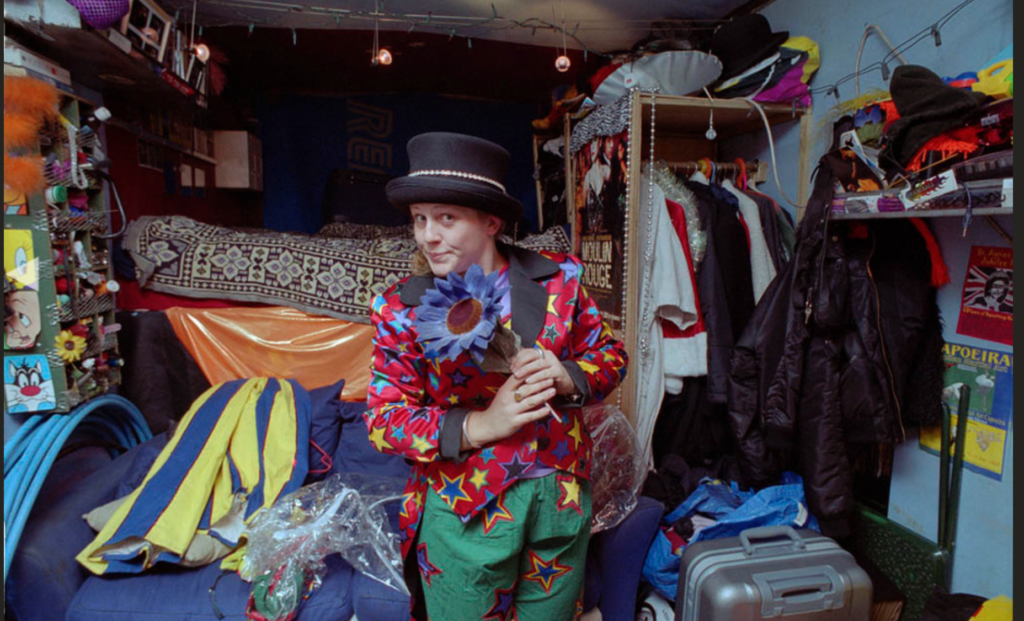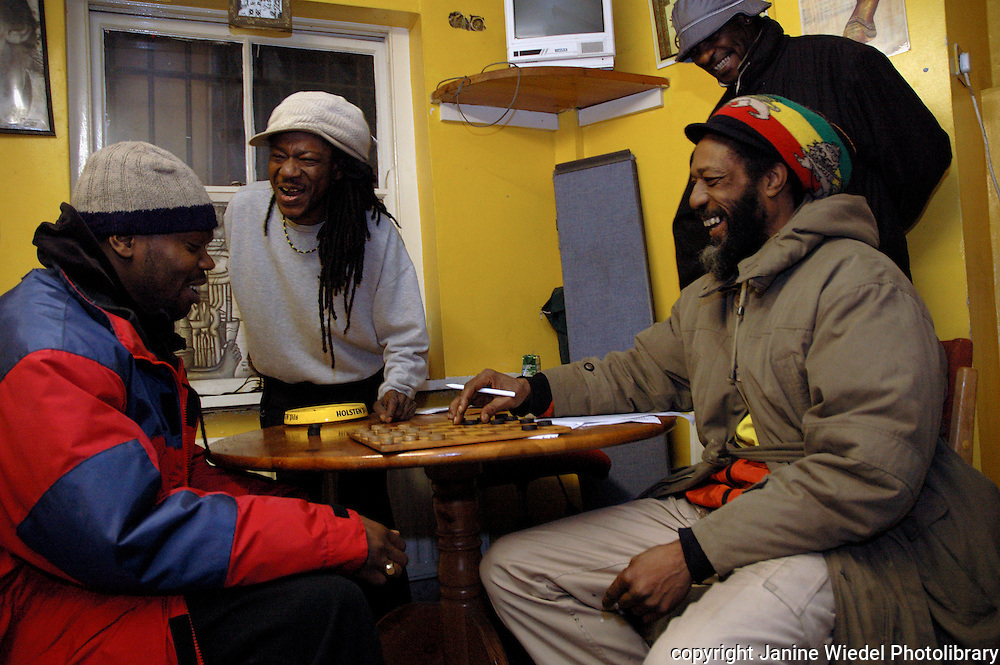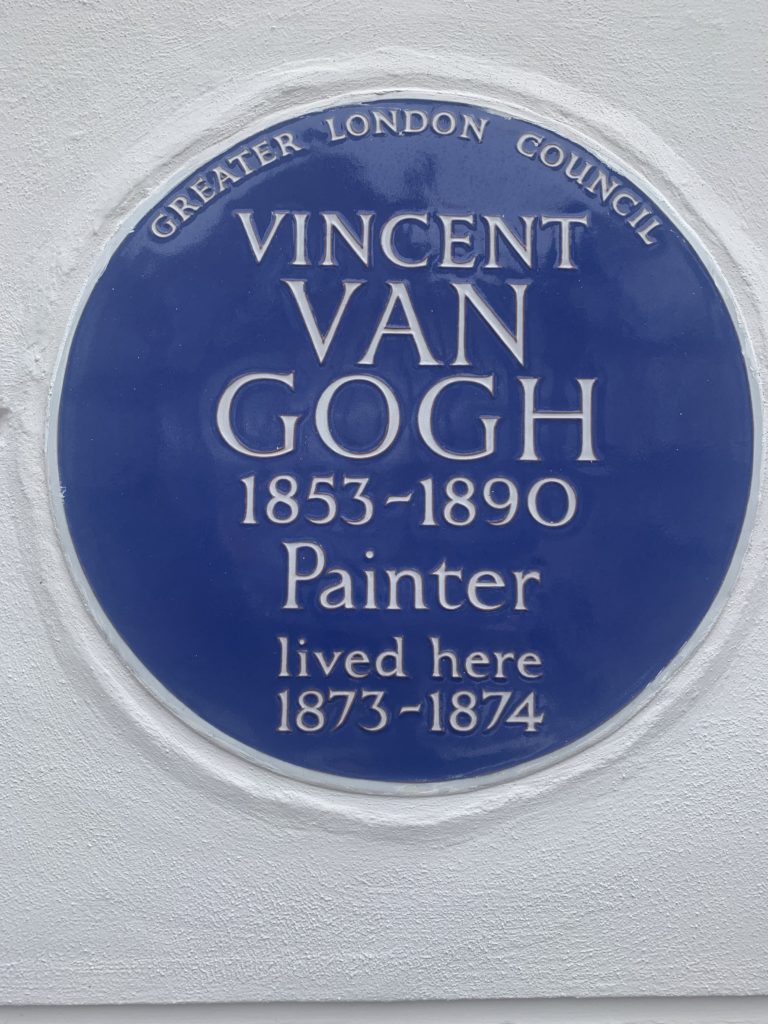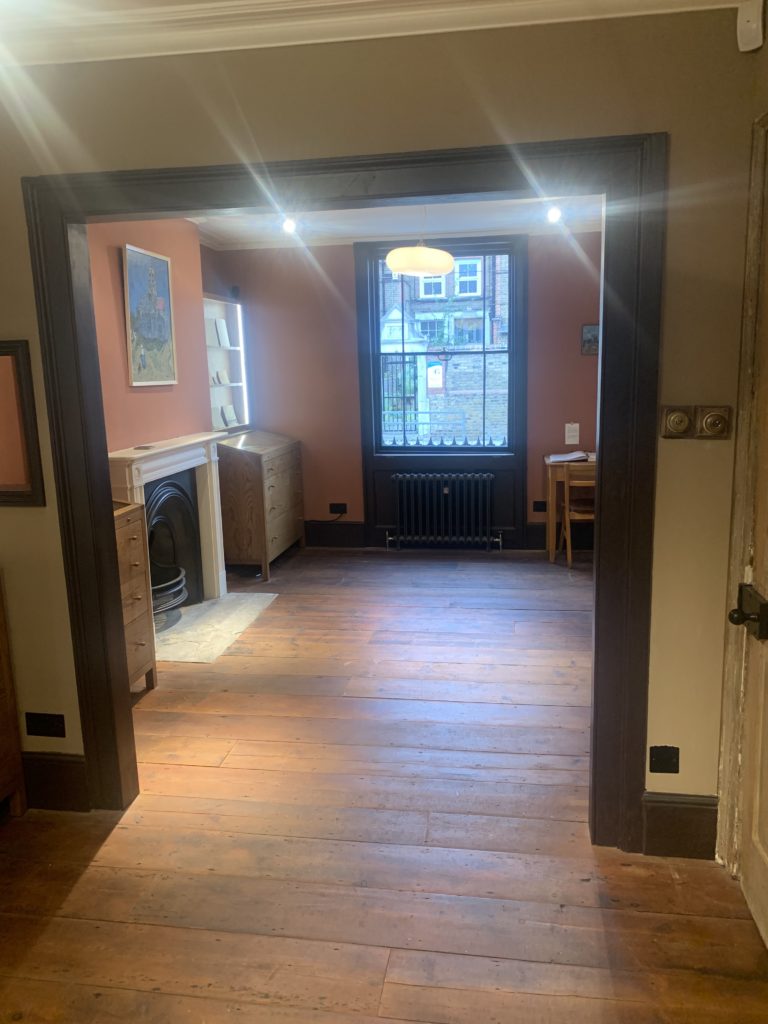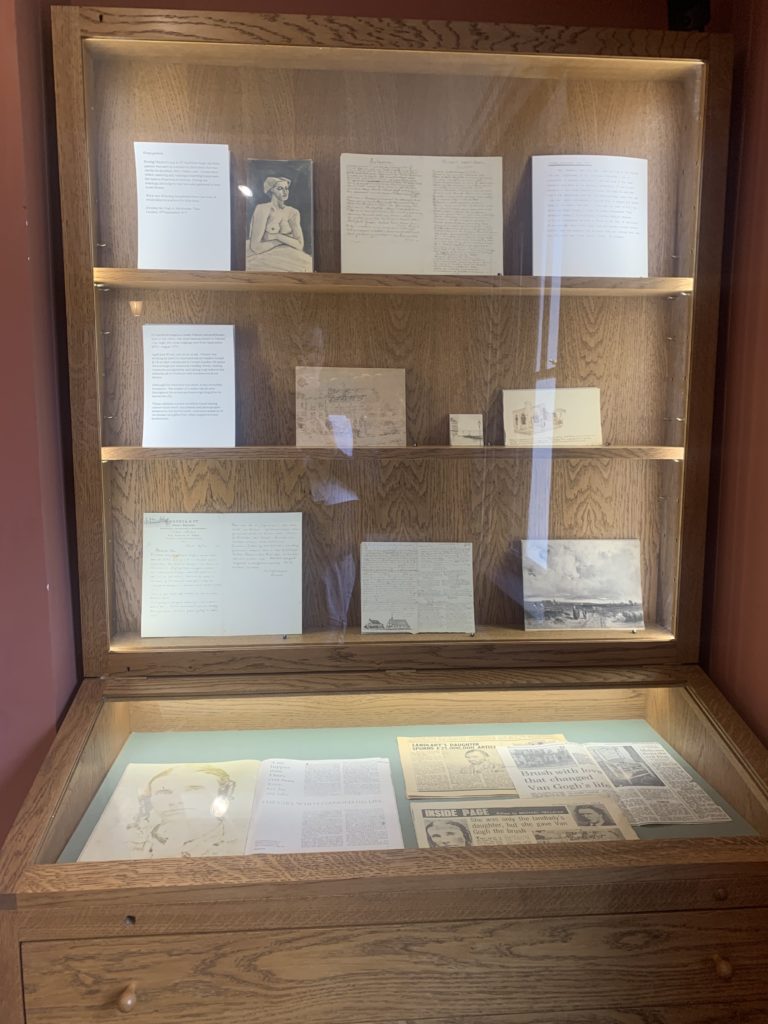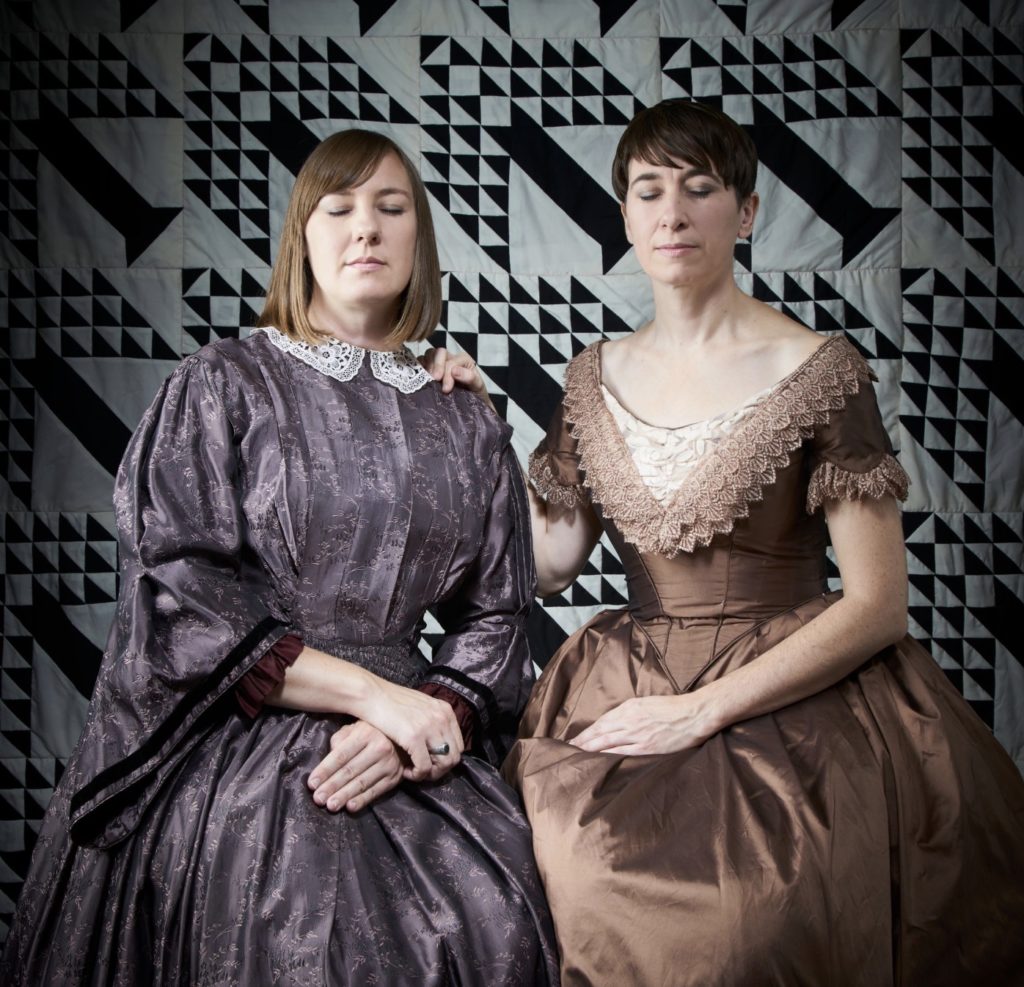We recently escaped from our publishing house hatch to pay a visit to Bouquets and Beans in front of St. Anselms Church in Kennington. And unless you’ve been stuck behind a hatch yourself, you’ll be aware that it is run by the hardest working man in Kennington, Abraham.
For this breakfast excursion your scribe was accompanied by office ‘fun guy’ Phil from accounts. We both ordered the savoury stuffed croissant. It was delivered to us grilled, as requested, and this explains why the croissant in the photo looks like Phil sat on it (and not for the first time). To add to the order Phil said ‘can I get a pint with that’. Your scribe tactfully pointed out to Phil that this a breakfast venue, in addition to it being 9:30 in the morning. He then ordered a coffee and your scribe had a tea.
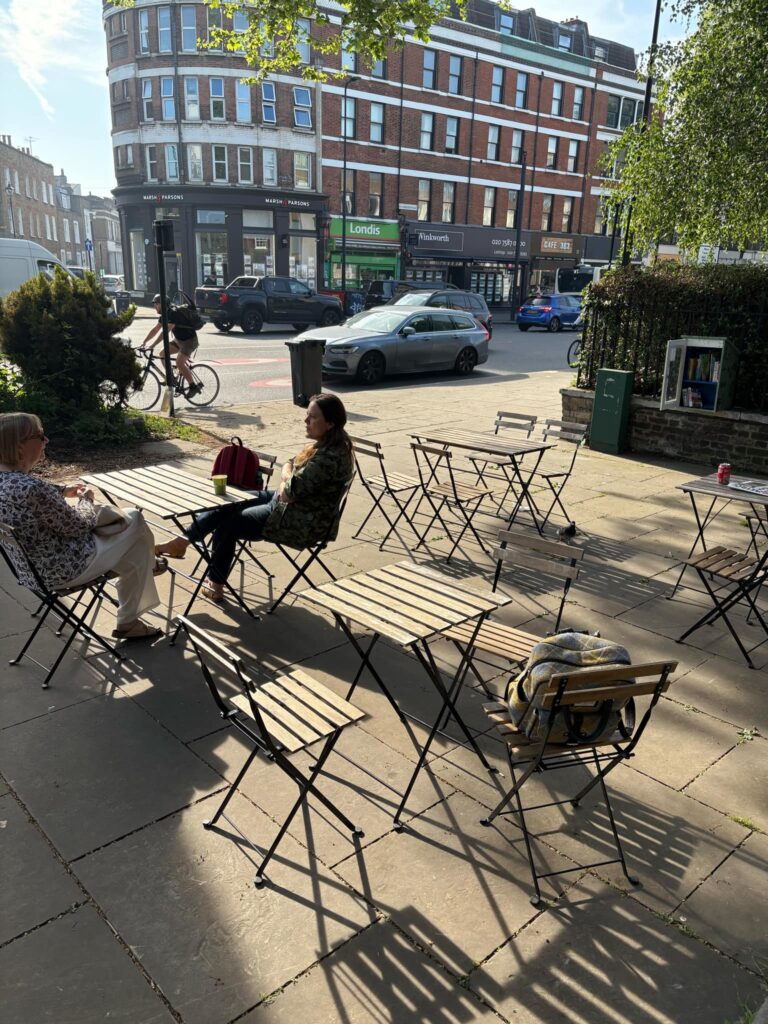
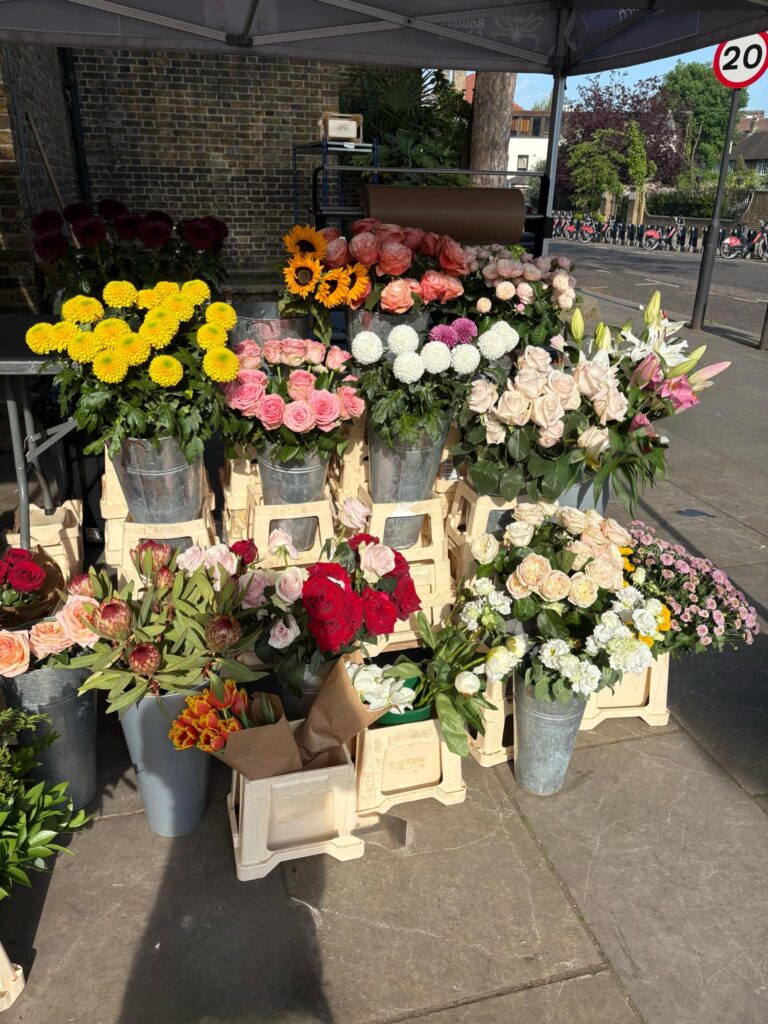
Our croissants were filled with a generous heap of high quality mozzarella cut from a ball, sun dried tomatoes, and a big dollop of pesto. It was almost a shame to see it melted and grilled, but the grilling brought out the buttery feel in the mouth. Plus, it gives us a flimsy excuse to go again and get the non grilled version. At £4.50 we can recommend this. Other options on the day were a pain au chocolate, almond croissant, and pistachio pain au chocolate.
And as you’re devouring your calorific croissant, why not buy some flowers! B&B’s also has a fine selection of blooms and Abraham or one of his perky Gez Z assistants can aid you in making a bouquet.
In the end Phil stared despairingly at his coffee which wasn’t a pint, and confirmed the quality to be rich, rounded, and right up there with another Observer fave, Urban Botanica around the corner. Another reason to go is the great community feeling it has, with many of your fellow Kenningtonians chatting and sipping.
